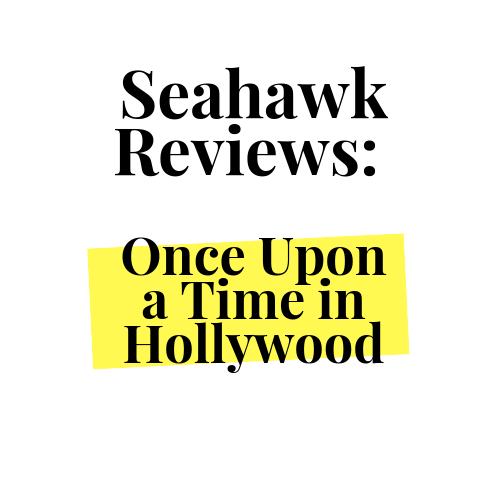“Once Upon a Time in Hollywood”: Taking it all in stride

By the time you are reading this, Tarantino’s ninth feature film will have been in theaters for six weeks, having already managed to gross about 283 million dollars worldwide, tripling its 90 million production budget. Allow me to claim that this is the most important success story of the summer movie season and for more than a few reasons. The first is that to be blunt, we are living in an age when many films aimed at adults fall short financially because streaming services like Netflix are offering quality adult-aimed content to their customers at the push of a button—they do not even have to leave their house. By this logic, it is nothing short of a miracle that a generously budgeted film without superheroes or explosions or flashy special effects was able to entice that same audience to see it in theaters. But the second reason, to me, is much more notable: Once Upon a Time in Hollywood feels like something far removed from the other films that currently accompany it in American multiplexes—stylistically, thematically and, dare I say, creatively.
The film’s story goes a little like this: television actor Rick Dalton (Leonardo DiCaprio) and his stunt double Cliff Booth (Brad Pitt) navigate the breezy moment of late 60’s Hollywood as Rick tries what he can to escape his typecasting in television westerns. Meanwhile, Roman Polanski and actress Sharon Tate (Margot Robbie) have rented the house next door to Rick’s in an inconspicuous cul-de-sac in Beverly Crest. Rick continues in his acting career, Cliff encounters a rather strange group of people in the place where Rick’s old westerns had been shot and Sharon lives her honest, innocent life. And all these events are cast in uneasy shadow by the Manson Murders, which, as well-informed audiences undoubtedly understand, looms over the horizon.
I will cut to the chase. As you may have already guessed by the synopsis, the story structure in this film is wholly different—decidedly different—than that of other modern Hollywood movies. Tarantino chooses not to employ a well-defined three-act structure to the narrative, instead choosing a much looser structure where certain moments seem to drag on longer than they perhaps should. Tarantino allows a moment to be a moment on a screen, carried not by story information but by an overarching attitude of free-spiritedness. Paired with a fixation on 60’s pop culture, Once Upon a Time in Hollywood feels less akin to a Tarantino film of the past such as Django Unchained, and more akin to the superfluous nature of Wong Kar-wai’s unfocused pop-art classic Chungking Express. It is made abundantly clear that Tarantino is not necessarily looking to impress his audience, instead choosing to simply provide them with a good time at the movies.
With that kind of story structure—a structure that understandably takes a master director to pull off properly—this film would have surely suffered if not for the profound levels of craftsmanship put on display in each shot. The production and costume design are period accurate, and they are quite eccentric in its style at that. The imagery, whether Brad Pitt is cruising down the street with only one hand on the wheel or Leonardo DiCaprio is dancing in a studio soundstage with dancers in the background, is always on point. Tarantino uses a wide variety of shot types in the film such as overhead crane shots, close-ups, medium-length shots and even his signatures (shots of feet, shots which zoom quickly from medium to close). Tarantino has purposefully prioritized this craftsmanship over the telling of a narrative, and, due to its quality, that gamble pays off in spades.
Every performance in this film is impressive. Leonardo DiCaprio displays a full range of emotions as an actor fading in popularity, Brad Pitt is the epitome of ‘cool’ as a laid-back jack of all trades, and Margot Robbie perfectly embodies her historical figure with the little screen-time she’s given. Special shout-outs to Julia Butters (who shines as Rick Dalton’s young co-star), Margaret Qualley (who intrigues as a wayward vagabond in with the wrong crowd) and Austin Butler (who, frankly, seems destined for greatness after what he pulled off in this film).
In short, Once Upon a Time in Hollywood is unlike any film that is receiving a nationwide theatrical release now. It manages to successfully lead up to its stunning punchline of a finale without compromising on its artistic vision. It is a piece of modern pop-art and an essential experience for any modern cinephile. The loose story structure may brand this a film that is not for everyone, but I nevertheless recommend it to anyone who is curious enough to give it a try.








